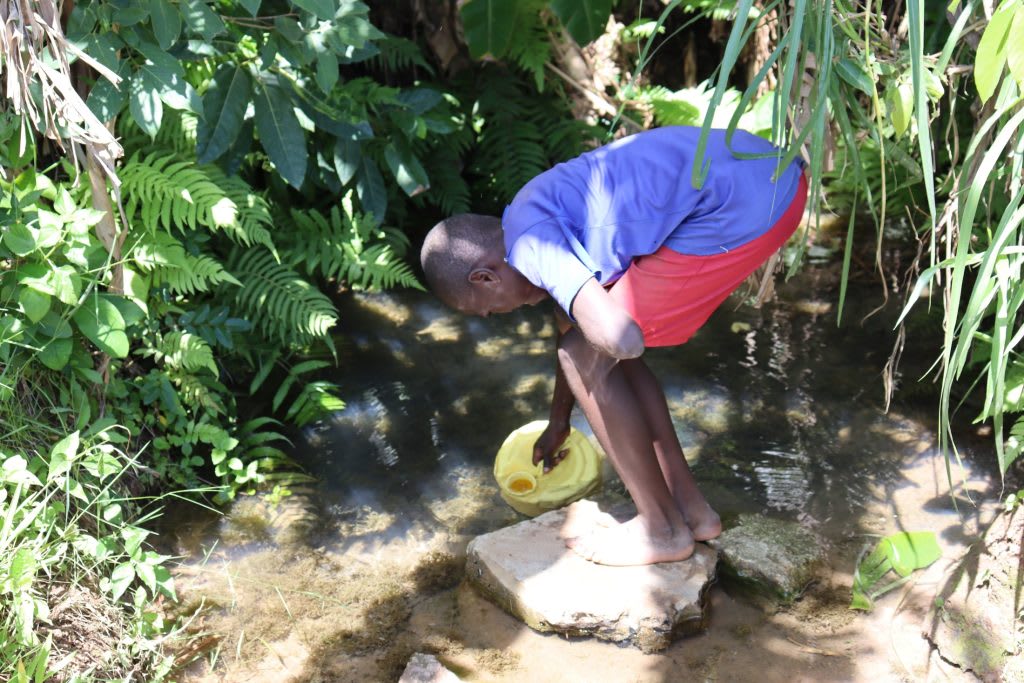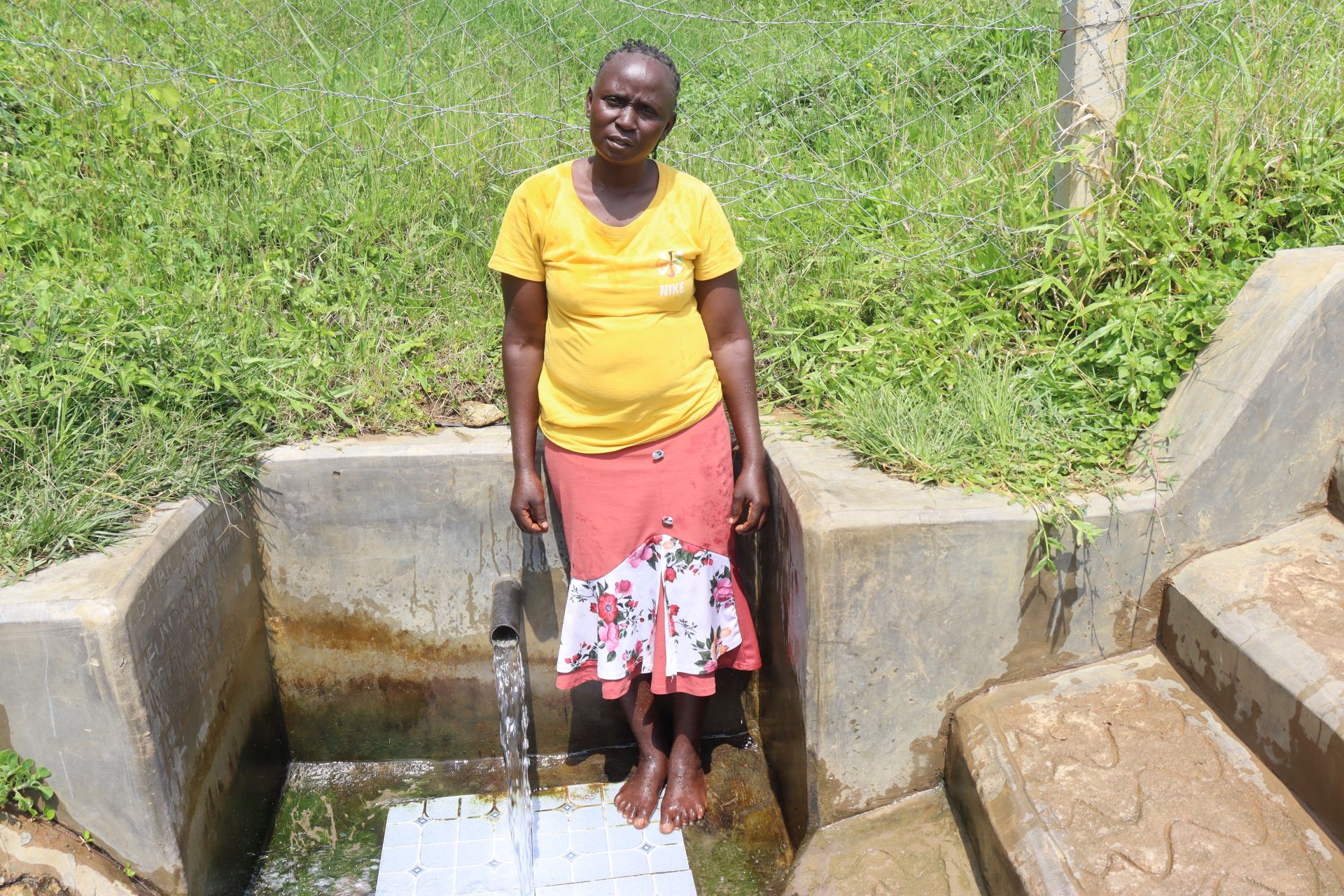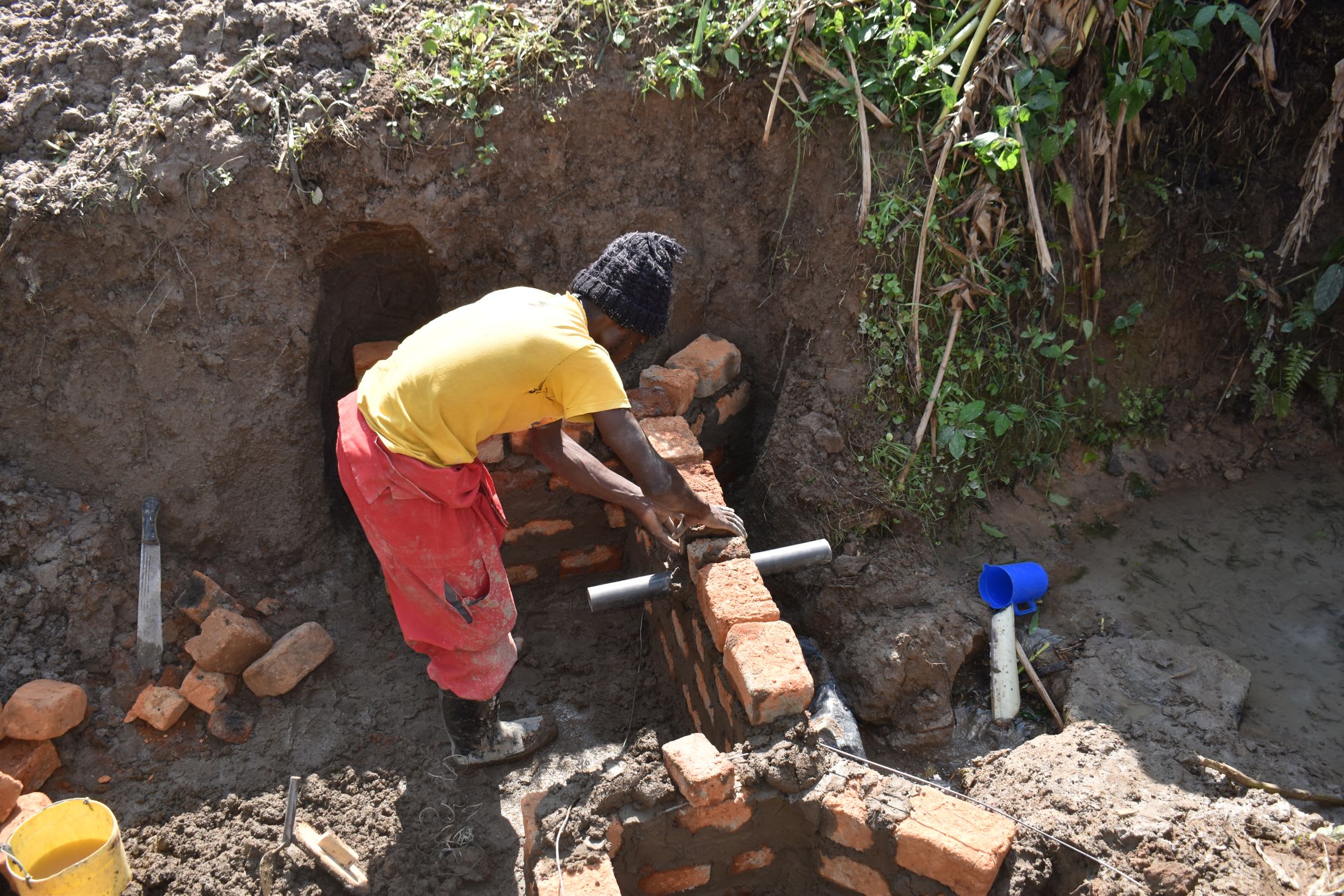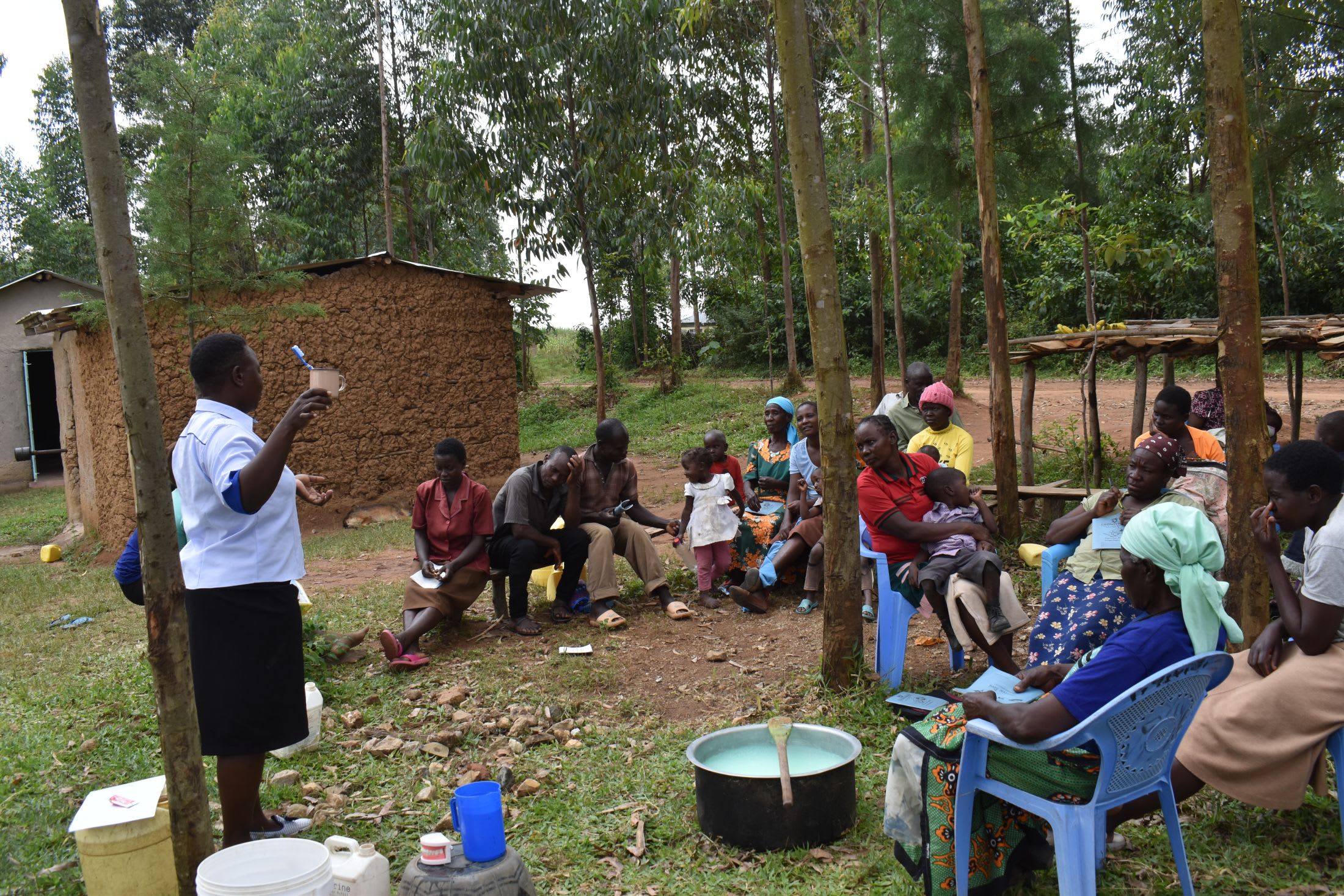The 210 people that call Shieywe home struggle to collect enough water from their primary source, an unprotected spring. Looking at the small, algae-filled shallow pool of water surrounded by rocks, it is easy to see that collecting water is challenging and time-consuming.
What is not as obvious is that the water people pour so much energy into collecting is not safe to drink, and each time they consume it, they risk their health.
"The water source is exposed to all kinds of contamination. The water gets so dirty, and this forces members to wait until the water settles down. [The] majority of community members fetch and consume water the way it is. The end result is always painful, as they report having had diarrhea and typhoid whenever they visited medical facilities for treatment," said our field officer Jacklyne Chelagat.

"I have been a culprit of consuming dirty water before it undergoes any treatment. This has [cost] me a lot. I have gotten sick for so many years, being unable to engage in development activities and also wasting a lot of resources to cater for medical attention," said 42-year-old farmer Isaiah Aineah, shown above carrying water.
People's health is not the only thing being stolen by this water point. Their time is also absorbed, leaving them with the difficult choice of which important tasks they will neglect. For children, that often leads to missing school time; for adults, it usually means missing out on income-generation opportunities they desperately need.
"In most cases, I have wasted a lot [of] time when sent to fetch water by my parents. I always wait for the water to settle before I fetch it," said 14-year-old Samuel N. (seen below).

As the first step in protecting this community's water source, we have installed a chlorine dispenser so community members can attempt to make the water they consume safer until we complete their spring. This, coupled with the proper spring protection, will make the water people collect and consume here safe to drink and reduce the collection time so the people of Shiewye can regain the time they need to improve their daily lives.
The Proposed Solution, Determined Together...
At The Water Project, everyone has a part in conversations and solutions. We operate in transparency, believing it benefits everyone. We expect reliability from one another as well as our water solutions. Everyone involved makes this possible through hard work and dedication.
In a joint discovery process, community members determine their most advantageous water solution alongside our technical experts. Read more specifics about this solution on the What We're Building tab of this project page. Then, community members lend their support by collecting needed construction materials (sometimes for months ahead of time!), providing labor alongside our artisans, sheltering and feeding the builders, and supplying additional resources.
Water Access for Everyone
This water project is one piece in a large puzzle. In Kenya, Sierra Leone, and Uganda, we're working toward complete coverage of reliable, maintained water sources that guarantee public access now and in the future within a 30-minute round trip for each community, household, school, and health center. One day, we hope to report that this has been achieved!
Training on Health, Hygiene & More
With the community's input, we've identified topics where training will increase positive health outcomes at personal, household, and community levels. We'll coordinate with them to find the best training date. Some examples of what we train communities on are:
- Improved hygiene, health, and sanitation habits
- Safe water handling, storage & treatment
- Disease prevention and proper handwashing
- Income-generation
- Community leadership, governance, & election of a water committee
- Operation and maintenance of the water point
Chlorine Dispensers
Installing chlorine dispensers is an important piece of our spring protection projects. Protecting a spring provides community members with an improved water source, but it doesn’t prevent contamination once the water is collected and stored. For example, if the water is clean and the container is dirty, the water will become contaminated.
We ensure that each chlorine dispenser is filled with diluted chlorine on a consistent schedule so that people can add pre-measured drops to each container of water they collect. That way, community members can feel even more confident in the quality of their water.





 Protected Spring
Protected Spring
 Rehabilitation Project
Rehabilitation Project


































